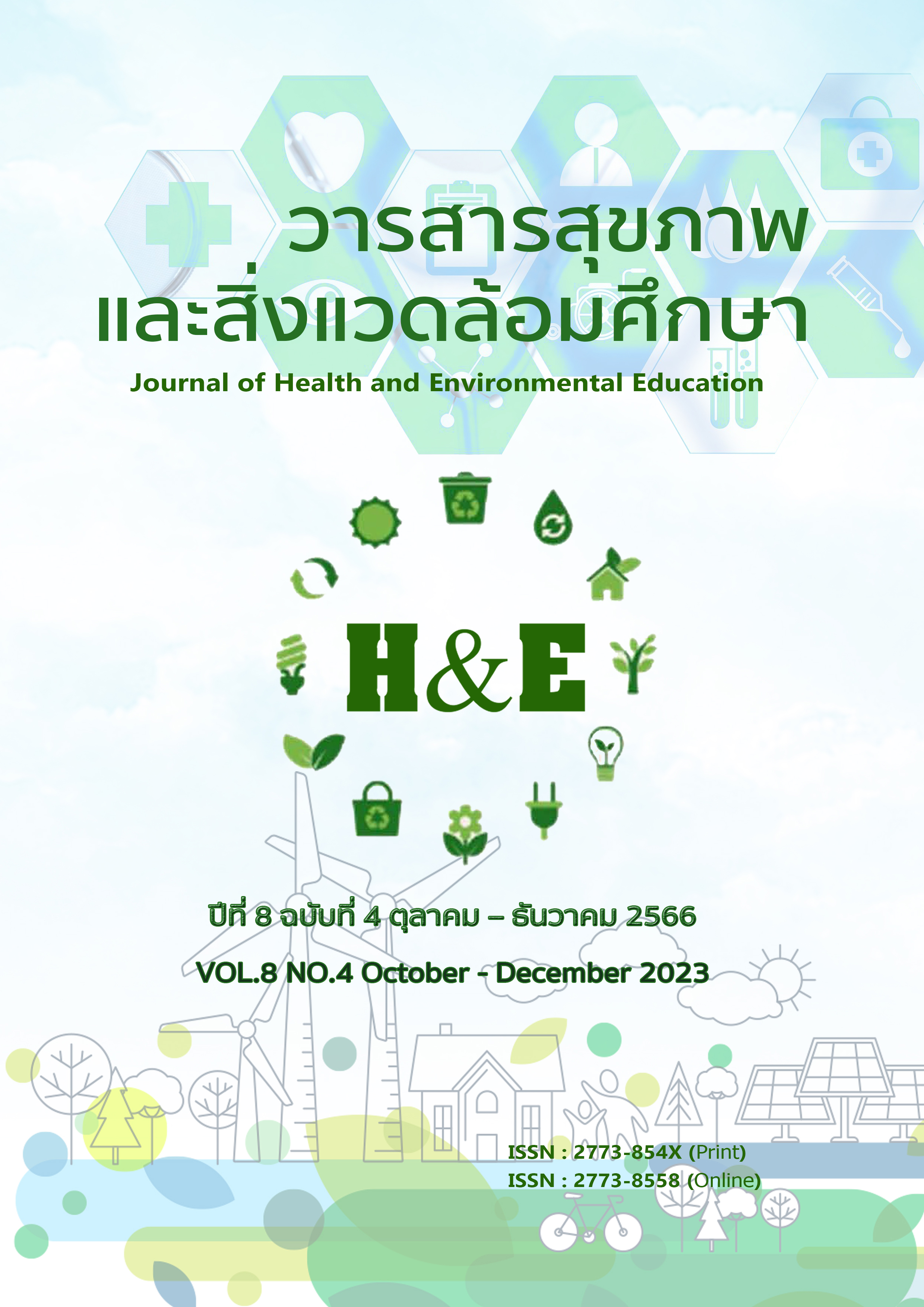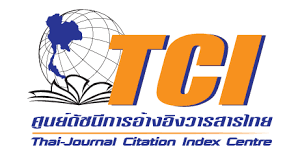Nursing care of pulmonary tuberculosis patients with hepatitis caused by tuberculosis drugs.
Keywords:
nursing, tuberculosis, hepatitis caused by tuberculosis drugs, health planAbstract
This study was case study aimed to study disease progression. nursing diagnosis Plan nursing action and nursing outcomes in patients with pulmonary tuberculosis who have drug-induced hepatitis. Selected specifically in patients with pulmonary tuberculosis who have hepatitis caused by tuberculosis drugs. It collects information from illness history, treatment, medical records, interviews, and assesses health status using Gordon's 11 health assessment concepts. Plan nursing action According to nursing diagnosis Summarize and evaluate results.
Results: Case study number 1 48-year-old Thai man presented with black vomit and received pulmonary tuberculosis I missed a 7-month prescription and came back to start over. Take medicine continuously according to every appointment. Recently, I had symptoms of vomiting and lost 10 kilograms of weight. The doctor diagnosed the disease as Rifampicin induced hepatitis. I am resting and recovering. Subsequently, symptoms were monitored periodically at every appointment. Later, my eyes began to blur. I have jaundice in my eyes, so I need to consult to change my medicine. Case study number 2, AFB Positive 2+ test results, the patient missed medicine for 1 month because after taking medicine he had nausea and vomiting. Started taking new medicine. Most recently, the patient had symptoms of dizziness and vertigo. It was found to be induced hepatitis from the drug Rifampicin.
References
วสันต์ กาติ๊บ. (2558). อาการไม่พึงประสงค์จากยาวัณโรคและการจัดการ. ใน วสันต์ กาติ๊บ (Ed.),Principle of infection diseases เชียงใหม่: โรงพิมพ์ยูเนียนออฟเวท.
กรมควบคุมโรค กองวัณโรค กระทรวงสาธารณสุข. แนวทางการดำเนินงาน กิจกรรมการรณรงค์วันวัณโรคสากล ประจำปี 2566 https://www.tbthailand.org/statustb.html
วรางคณา กีรติชนานนท์, สุริยา กีรติชนานนท์. วิธีป้องกันและรักษาผู้ป่วยที่เกิดภาวะพิษต่อตับจากการใช้ยาต้านวัณโรค.ธรรมศาสตร์เวชสาร.2558: 646 -57.
ประเทือง ธราธรรุ่งเรือง. การพยาบาลผู้ป่วยวัณโรคปอดในงานบริการผู้ป่วยนอก: กรณีศึกษา.วารสารวิทยาลัยพยาบาลพระจอมเกล้า จังหวัดเพชรบุรี.2561:77 -95.
สำนักวัณโรค กรมควบคุมโรค กระทรวงสาธารณสุข. แนวทางการป้องกันและควบคุมการแพร่กระจายเชื้อวัณโรคพิมพ์ครั้งที่ 1. กรุงเทพฯ: สำนักพิมพ์อักษรกราฟฟิคแอนด์ดีไซน์; 2559.
สำนักวัณโรค กรมควบคุมโรค กระทรวงสาธารณสุข. แนวทางการควบคุมวัณโรคประเทศไทย พ.ศ.2564.พิมพ์ครั้งที่ 1. กรุงเทพฯ: สำนักพิมพ์อักษรกราฟฟิคแอนด์ดีไซน์; 2564.
วิลาวัณย์ ทองเรือง (2555). ภาวะพิษต่อตับจากยาต้านวัณโรค: อุบัติการณ์ กลไก และการจัดการวารสารไทยเภสัชศาสตร์และวิทยาการสุขภาพ, 7(4), 107-204.
วิศาล สุทธิพัฒนางกูร. (2544). การเกิดพิษต่อตับจากยาต้านวัณโรคในผู้ป่วยใน โรงพยาบาลจุฬาลงกรณ์. (เภสัชศาสตรมหาบัณฑิต). จุฬาลงกรณ์มหาวิทยาลัย, กรุงเทพฯ.
สมาคมเภสัชกรรมโรงพยาบาล. (2559). แนวทางปฎิบัติในการทำงานติดตามอาการไม่พึงประสงค์จากการใช้ยา. กรุงเทพฯ: ปรมัตถ์การพิมพ์.
สำนักวัณโรค กรมควบคุมโรค. (2559). สถานการณ์และการแพร่กระจายเชื้อวัณโรค. ในแนวทางการป้องกันและควบคุมการแพร่กระจายเชื้อวัณโรค. กรุงเทพฯ: สำนักพิมพ์อักษรกราฟฟิคแอนดีไซน์.
สุพพัตธิดา แสงทอง, จิระภา ศิริวัฒนเมธานนท์, และสุพัตรา บัวที. (2555). อาการและการรับรู้อาการไม่พึงประสงค์จากยารักษาวัณโรคของผู้ป่วยวัณโรคปอด. วารสารวิทยาศาสตร์และเทคโนโลยี มหาวิทยาลัยมหาสารคาม, 9(0), 420-421.
สุพพัตธิดา แสงทอง, จิระภา ศิริวัฒนเมธานนท์, และ สุพัตรา บัวที. (2556). ผลของการจัดการอาการร่วมกับการให้แรงสนับสนุนทางสังคมเพื่อการเรียนรู้ การปฏิบัติตัวของผู้ป่วยวัณโรคปอด วารสารสมาคมพยาบาลสาขาภาคตะวันออกเฉียงเหนือ, 31(4), 105-114.
สุรเชษฐ์ อรุโณ ทอง, ชูพงศ แสงสว่าง, ป ณิธี ธัมมวิจยะ, ศรีทรงชัย รัตนเจียมรังษี, และสุดใจ หอธรรมกุล. (2558). ปัจจัยด้านประชากรและคลินิกที่สัมพันธ์กับการเปลี่ยนยารักษาวัณโรคที่มีสาเหตุจากการ แพ้ยาในกลุ่มผู้ป่วยวัณโรครายใหม่ของเขตภาคเหนือตอนบนและภาคอีสานตอนบน ของประเทศไทย: การศึกษาโดยใช้ข้อมูลทุติยภูมิจากระบบรายงานวัณโรคปกติระดับเขต. เชียงใหม่เวชสาร, 54(3), 109-119.
อนงค์ ทองสามัญ. (2558). ประสบการณ์อาการ กลวิธีการจัดการอาการ และผลลัพธ์การจัดการอาการไม่พึงประสงค์ของยาวัณโรค (พยาบาลศาสตร์มหาบัณฑิต). มหาวิทยาลัยมหิดล, กรุงเทพฯ.
Abera, W., Cheneke, W., & Abebe, G. (2016). Incidence of antituberculosis-drug-induced hepatotoxicity and associated risk factors among tuberculosis patients in Dawro Zone, South Ethiopia: A cohort study. Journal of mycobacteriology, 5(1), 14-20. doi:10.1016/j.ijmyco.2015.10.002
Aithal, G. P., Watkins, P. B., Andrade, R. J., Larrey, D., Molokhia, M., Takikawa, H.Daly, A. K. (2011). Case definition and phenotype standardization in druginduced liver injury. Clinical pharmacology and therapeutics, 89(6), 806-815. doi:10.1038/clpt.2011.58




